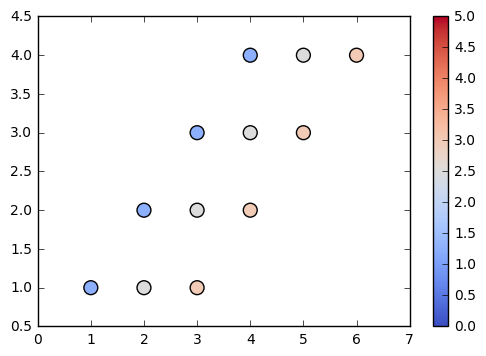#importando a biblioteca
import matplotlib.pyplot as plt
# Plotar imagem no jupyter
%matplotlib inline # ou plt.show()
#Não sei se é necessário, talvez plt.show() já resolva todo o problema
#cores disponíveis
plt.style.available
[u'seaborn-darkgrid',
u'seaborn-notebook',
u'classic',
u'seaborn-ticks',
u'grayscale',
u'bmh',
u'seaborn-talk',
u'dark_background',
u'ggplot',
u'fivethirtyeight',
u'seaborn-colorblind',
u'seaborn-deep',
u'seaborn-whitegrid',
u'seaborn-bright',
u'seaborn-poster',
u'seaborn-muted',
u'seaborn-paper',
u'seaborn-white',
u'seaborn-pastel',
u'seaborn-dark',
u'seaborn-dark-palette']
# Mudar tamanho da imagem
plt.rcParams['figure.figsize'] = (11,7)
# Salvar figura com transparência ou não
plt.savefig('nome_da_imagem.png'`, transparent = True)import matplotlib.pyplot as plt
x= range(10)
y = range(0,100,10) # Criando variáveis
print (x,y)
plt.plot(x, y) #Criando o plot ou - fig,ax = plt.subplots()
# - ax.plot(x, y)
plt.title('TITULO LINDO') #Título
plt.xlabel('Eixo X')
plt.ylabel('Eixo Y') # Nomes dos eixos
plt.show() # Printando o plot([0, 1, 2, 3, 4, 5, 6, 7, 8, 9], [0, 10, 20, 30, 40, 50, 60, 70, 80, 90])
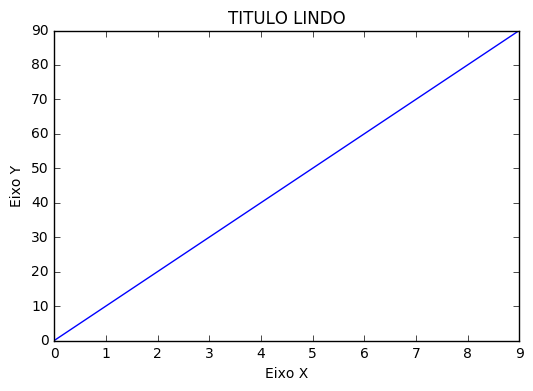
import matplotlib.pyplot as plt
x= range(10)
y = range(0,100,10) # Criando variáveis
# Outras formas de plotagens
plt.plot(x, y, color='green')
plt.scatter(x, y, color='red')
plt.show()
plt.plot(x, y, 'b--')
plt.scatter(x, y, marker="*", color='red')
plt.show()
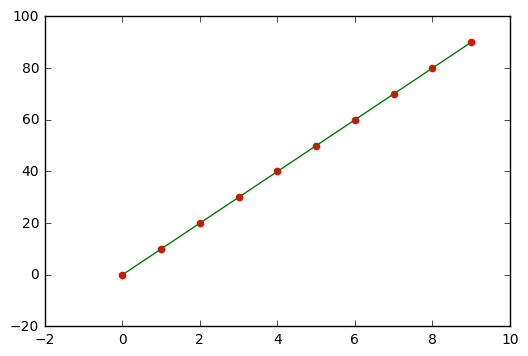
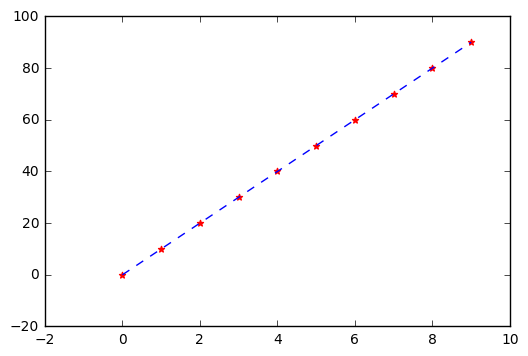
import matplotlib.pyplot as plt
#Anotações
x= range(10)
y = range(0,100,10) # Criando variáveis
fig, ax = plt.subplots()
ax.bar(x, y)
ax.annotate("Maior valor",
xy=(9.3, 12),
xycoords='data',
xytext=(11, 10),
textcoords='data',
arrowprops=dict(arrowstyle="->",connectionstyle="arc3"))
plt.show()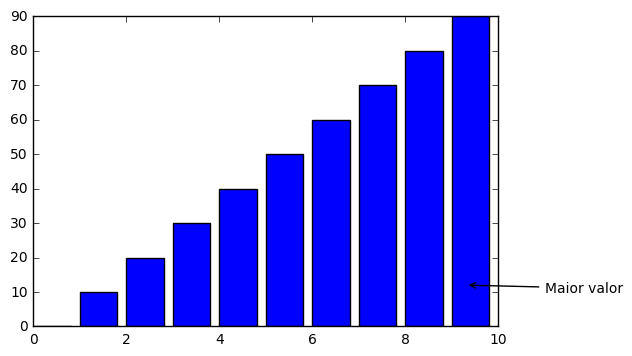
import matplotlib.pyplot as plt
import numpy as np
x1= np.random.rand(3,2)
x2= np.random.rand(3,2) #Criando variáveis aleatórias
x3= np.random.rand(3,2)
x4= np.random.rand(3,2)
y1= np.random.rand(3,2)
y2= np.random.rand(3,2) #Criando variáveis aleatórias
y3= np.random.rand(3,2)
y4= np.random.rand(3,2)
plt.scatter(x1,y1,color='red')
plt.scatter(x2,y2,color='blue')
plt.scatter(x3,y3,color='yellow')
plt.scatter(x4,y4,color='green')
plt.show()
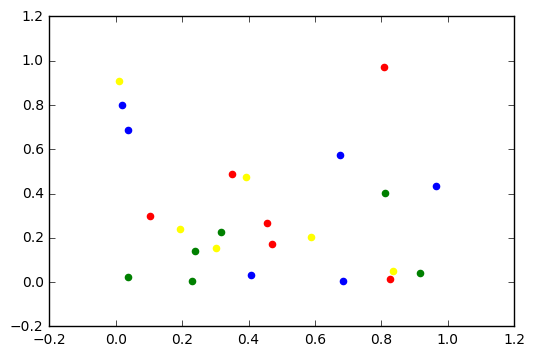
import matplotlib.pyplot as plt
jet=plt.get_cmap('coolwarm')
x = [1,2,3,4]
y = [1,2,3,4]
z = [1,1,1,1]
a = [2,3,4,5]
b = [1,2,3,4]
c = [2,2,2,2]
d = [3,4,5,6]
e = [1,2,3,4]
f = [3,3,3,3]
plt.scatter(x, y, s=100, c=z, cmap=jet, vmin=0, vmax=4)
plt.scatter(a, b, s=100, c=c, cmap=jet, vmin=0, vmax=4)
plt.scatter(d, e, s=100, c=f, cmap=jet, vmin=0, vmax=4)
plt.clim(0,5)
plt.colorbar()
plt.show()